Alligator boots require special care and maintenance compared to those made from cow leather. Alligator leather is somewhat dryer with raised tiles that require more conditioning on a more frequent basis than cow leather. Correct storage, cleaning and conditioning help ensure that dust and other debris does not harm the fibers of the boot, keeping your prized boots in top condition for years.
Storage
Make sure you provide proper storage for your boots. Get some high-quality boot trees and use them while you are not wearing the boots. Boot trees are boot-shaped forms that help maintain the correct shape in the alligator skin. The best ones are made of cedar and have movable parts that allow you to adjust the tree to your size. It is best to get two separate pieces for each boot. One will fit inside the vamp, or lower part of the boot, and keep the foot-like shape. The other will provide support for the shaft and keep it from folding over.
It is also a good idea to keep your boots covered while they are stored. Keep them in their original box or get a drawstring bag for storage. Dust can damage the boots even while they are in the closet. Preventing dust from getting on the surface is better than cleaning it off later.
Regular Maintenance
To provide the best maintenance for your alligator boots, establish a routine of good boot-care habits. Make sure you give them a good dusting each time you remove them. According to the Cultured Cowboy Western Mall in Greenwood, South Carolina, you can use your sock to give them the once-over when you take them off, in order to remove any dust, or keep a soft dusting cloth at hand for this purpose.
Set aside a specific time every week or so to deep clean and condition the alligator skin. The frequency of the cleanings depends on how often you wear your boots and in what kind of environment. If you wear them daily outside, clean them more often than if you wear them only once a month and inside.
To clean them, first wipe with a barely damp cloth to remove any visible dirt or dust. Since alligator hide has a textured finish, dust and dirt is able to hide in the cracks and crevices more easily than in smooth leather.
You can clean alligator boots with saddle soap as long as you remove all the soap residue afterward. Alternatively, check with a reputable shoe-repair shop or boot retail store for alligator-specific cleaning products. Remember that alligator leather requires more and gentler care than cow leather.
After cleaning, condition the leather with a good conditioner. Apply the conditioner only when you are sure the boots are completely clean and thoroughly dry. Be sure to use a conditioner made specifically for alligator boots.
Reptile conditioners are lighter than cow-leather conditioners and contain different ingredients, so it is important to use one specifically made for alligator leather. Conditioners made for cow leather contain heavier oils and waxes which attract dust and clog pores on reptile leather. Also, since alligator leather is harder than most other types, you will have to apply conditioner more often and in thinner coats to make sure the conditioner penetrates properly, preventing the leather from cracking.
Emergency Cleaning
If you spill something on your boots or get them wet or especially dirty, such as by stepping in a mud puddle, clean off the substance immediately, especially if it contains alcohol. Alcohol dries the leather out very fast and could cause damage to the leather fibers. After wiping off the spill, clean and condition as you would in your periodic cleaning session.
Related Articles

How to Care for Moccasins

How to Care for Lucchese Cowboy Boots
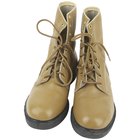
How to Treat Timberland Boots

Can You Use Mink Oil on Snakeskin Boots?

How to Care for Stingray Boots

How to Prepare UGG Boots for First Time ...

How to Restore Flaking Leather

How to Prevent Jordans From Cracking
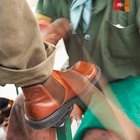
How to Care for Your Blundstones
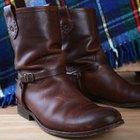
How to Care for Frye Boots

What Are the Benefits of Kangaroo ...

How to Preserve Leather Boots

How to Care for Ariat Cowboy Boots

How to Keep Leather Soles From Wearing ...

How to Take Care of Oiled Leather Boots
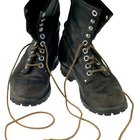
How to Harden Leather Boots

How to Care for Asolo Leather Hiking ...

How to Repair Cracked Lizard Boots

How to Care for Caiman Boots
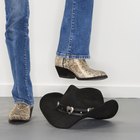
How to Care for Snakeskin Boots
References
Writer Bio
Karren Doll Tolliver holds a Bachelor of English from Mississippi University for Women and a CELTA teaching certificate from Akcent Language School in Prague. Also a photographer, she records adventures by camera, combining photos with journals in her blogs. Her latest book, "A Travel for Taste: Germany," was published in 2015.